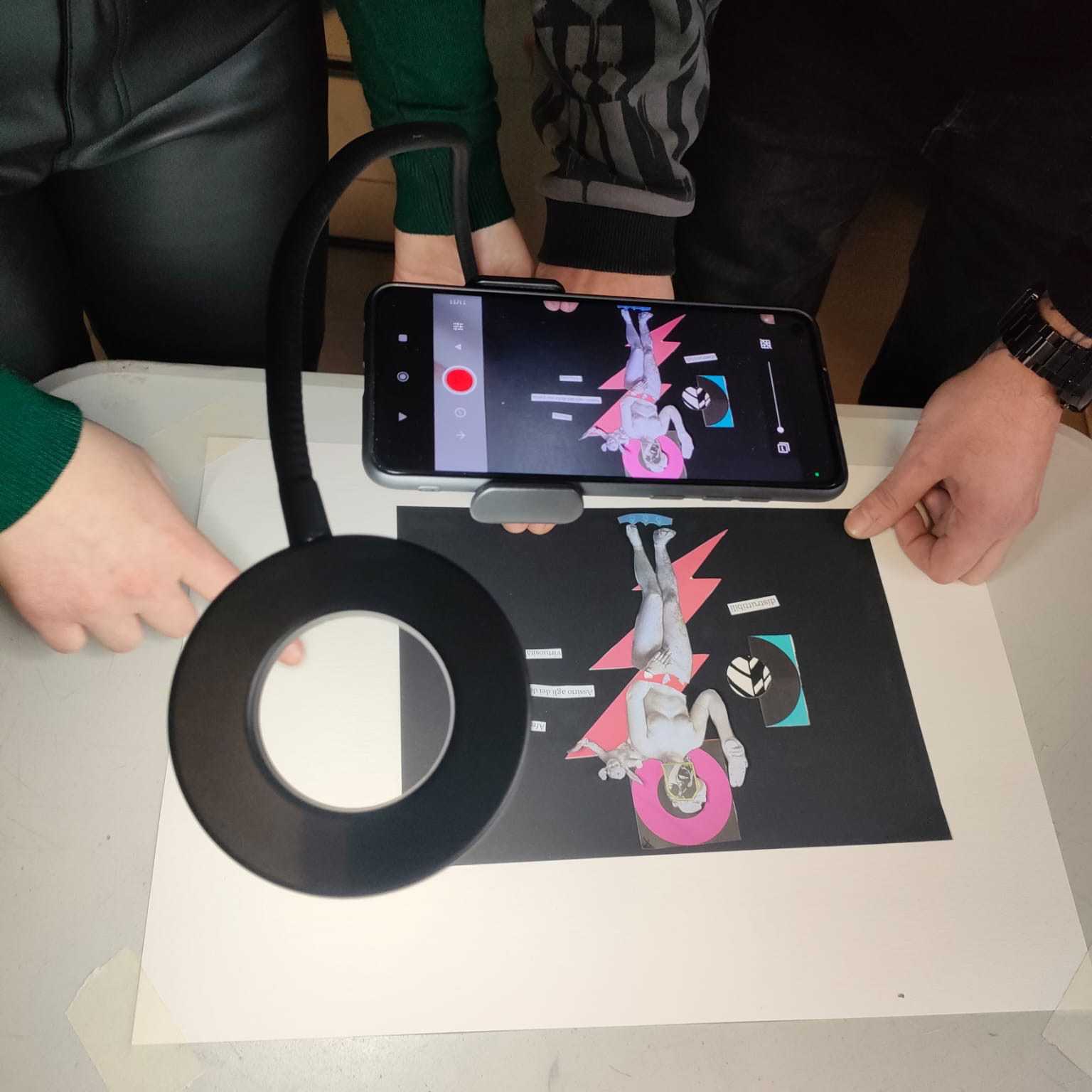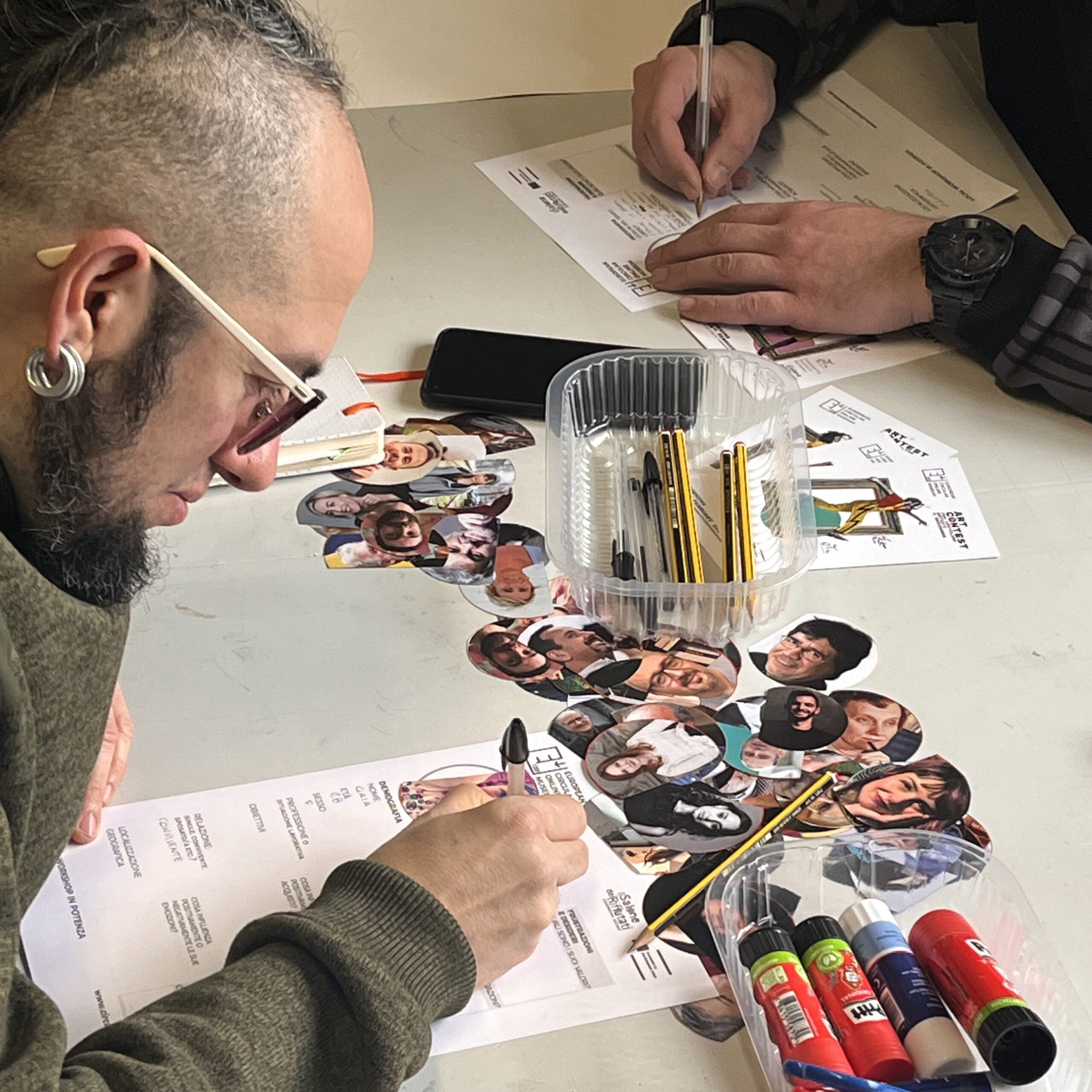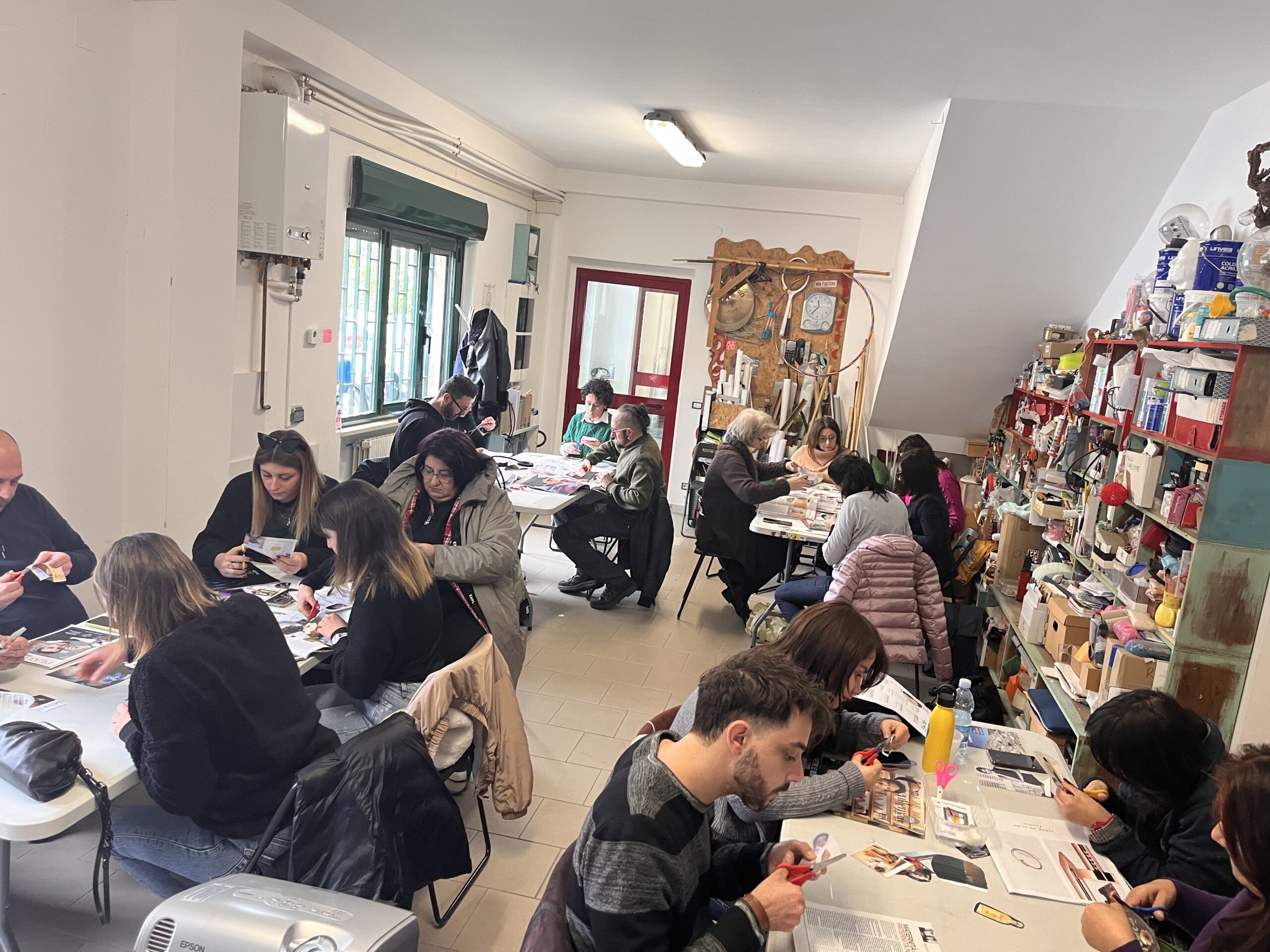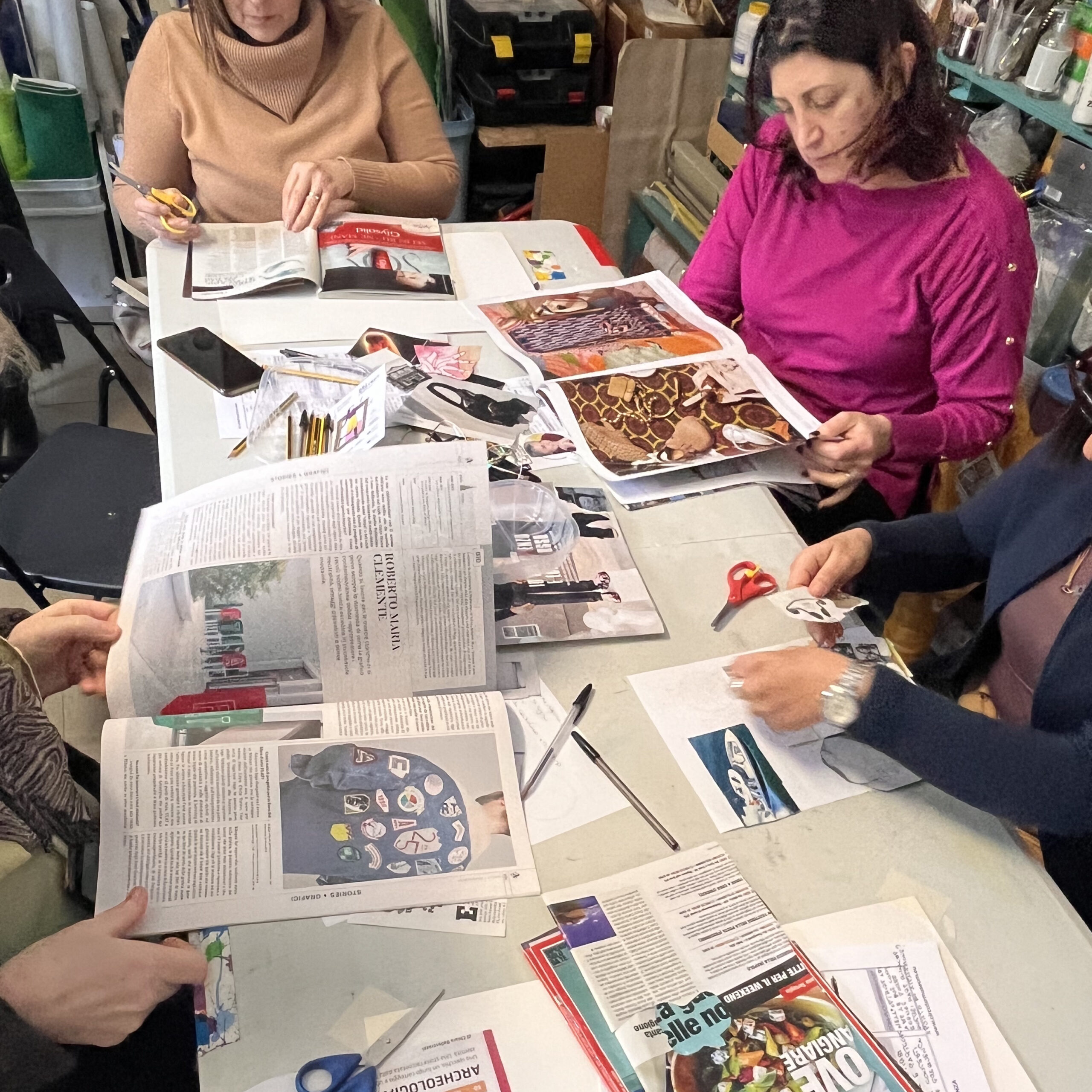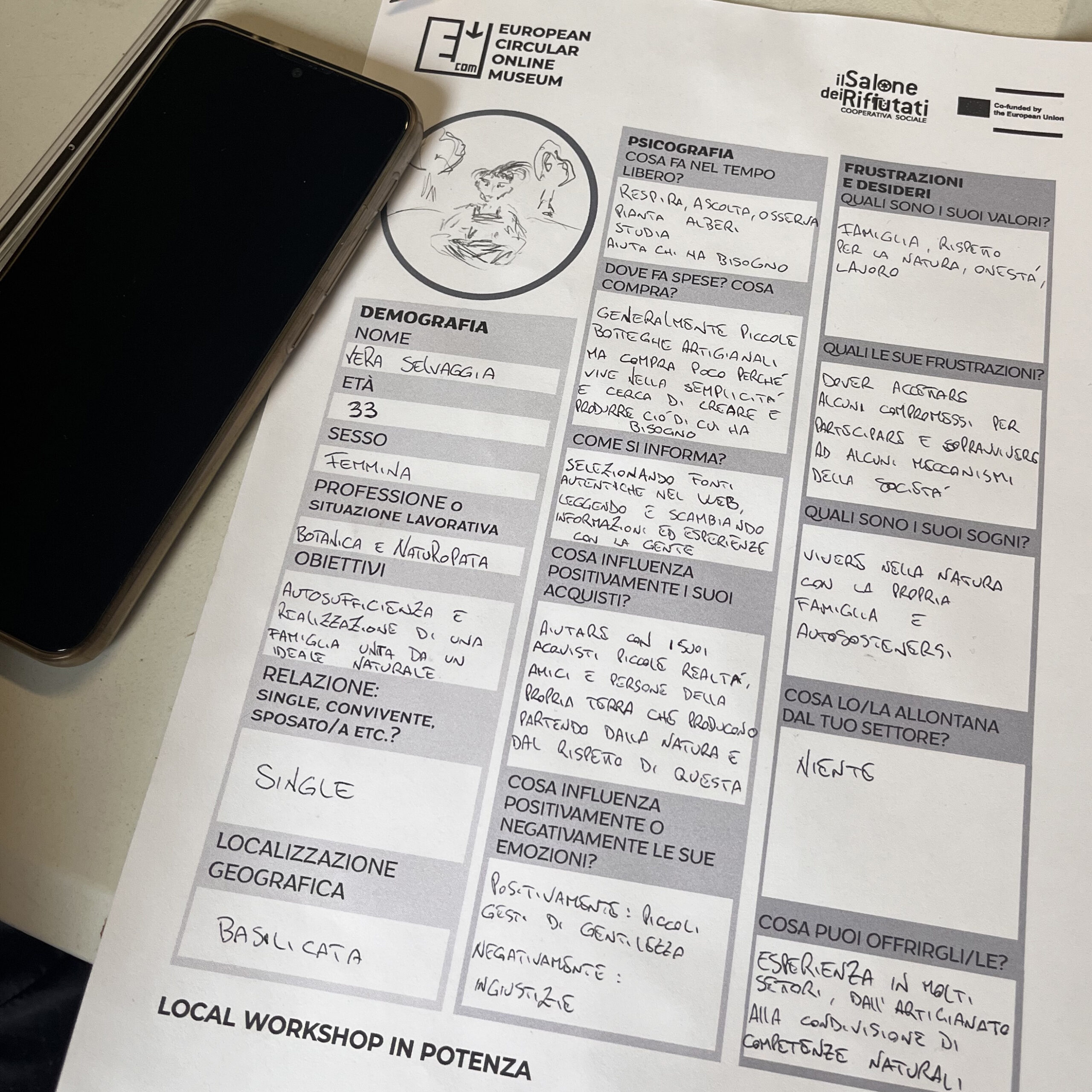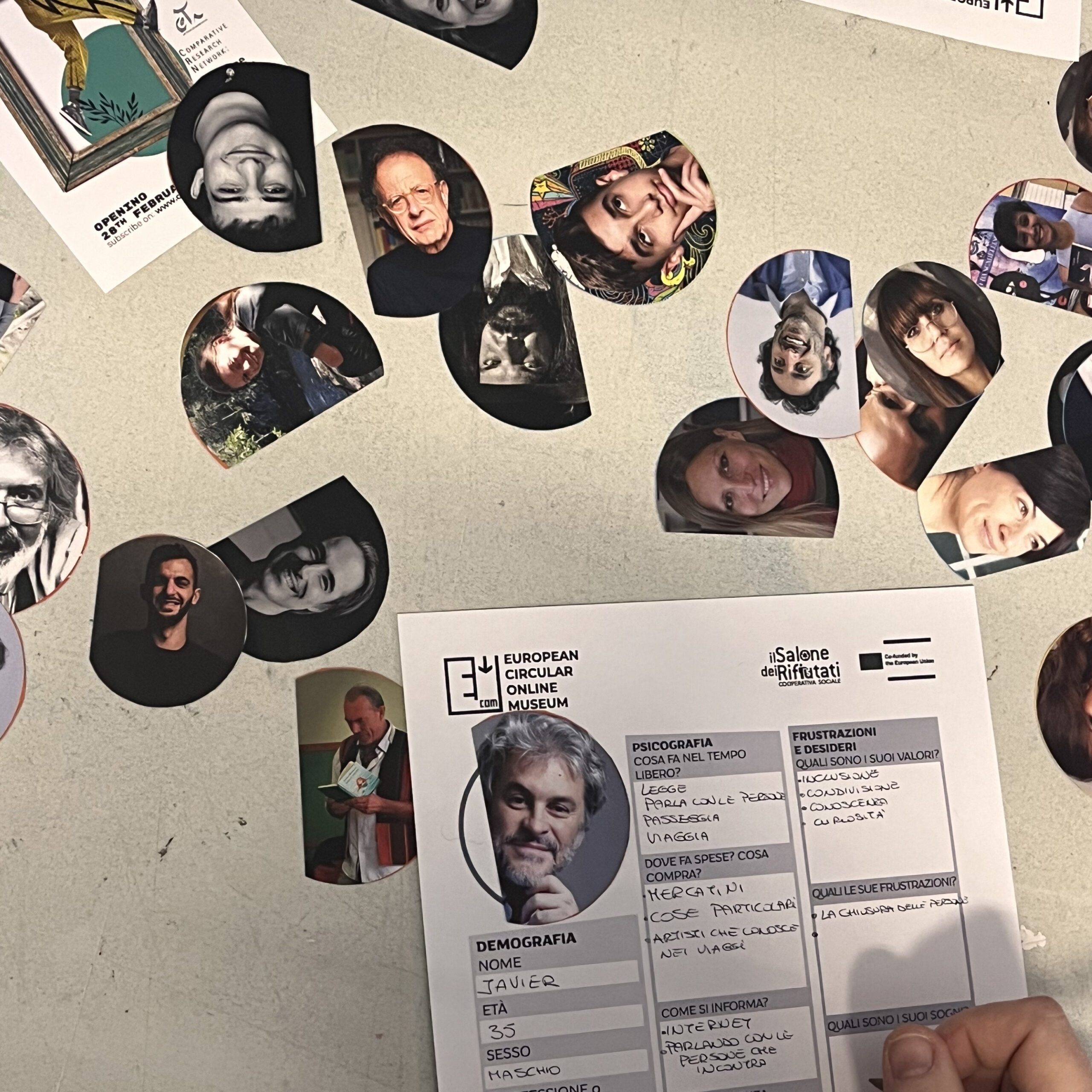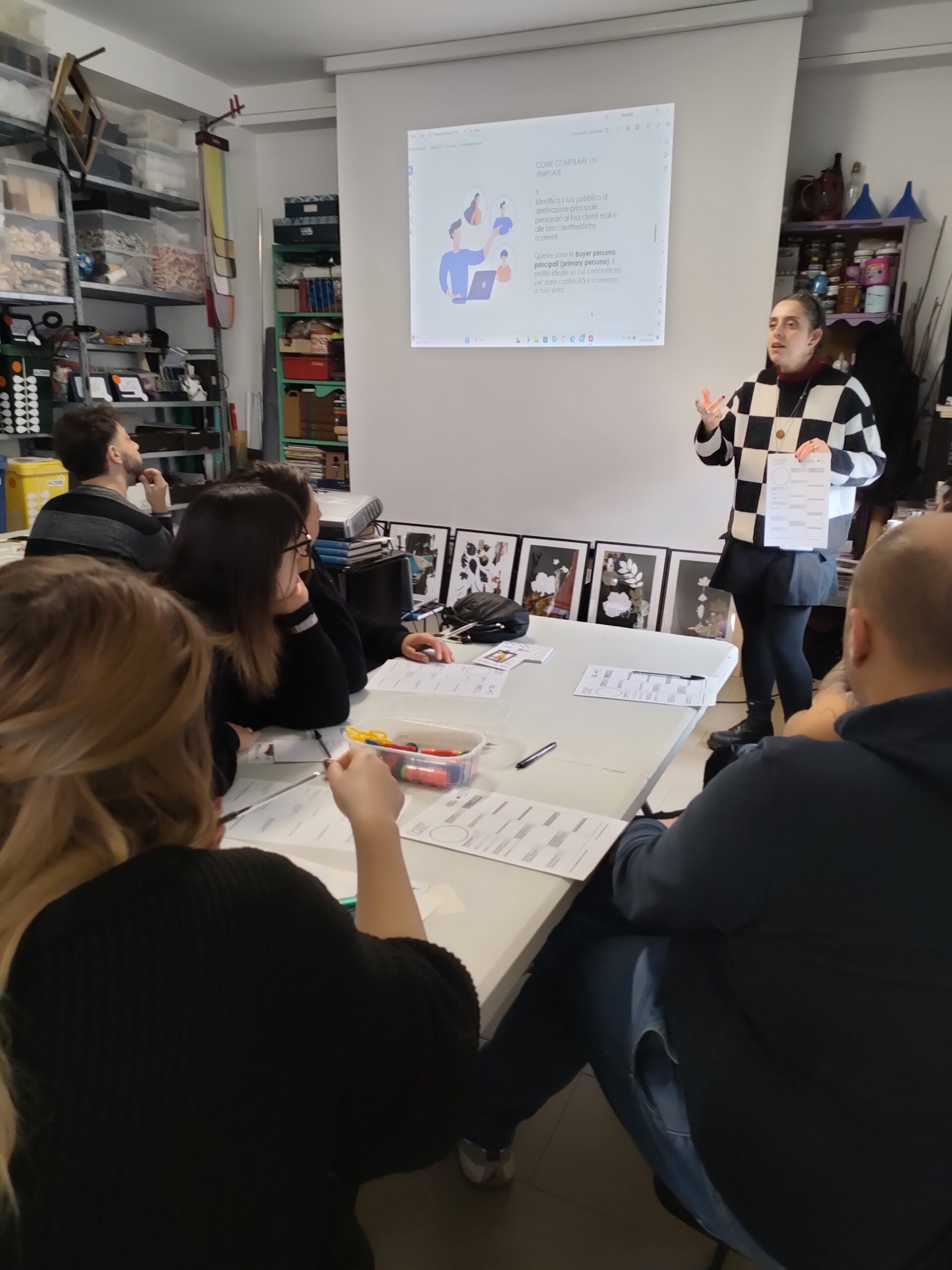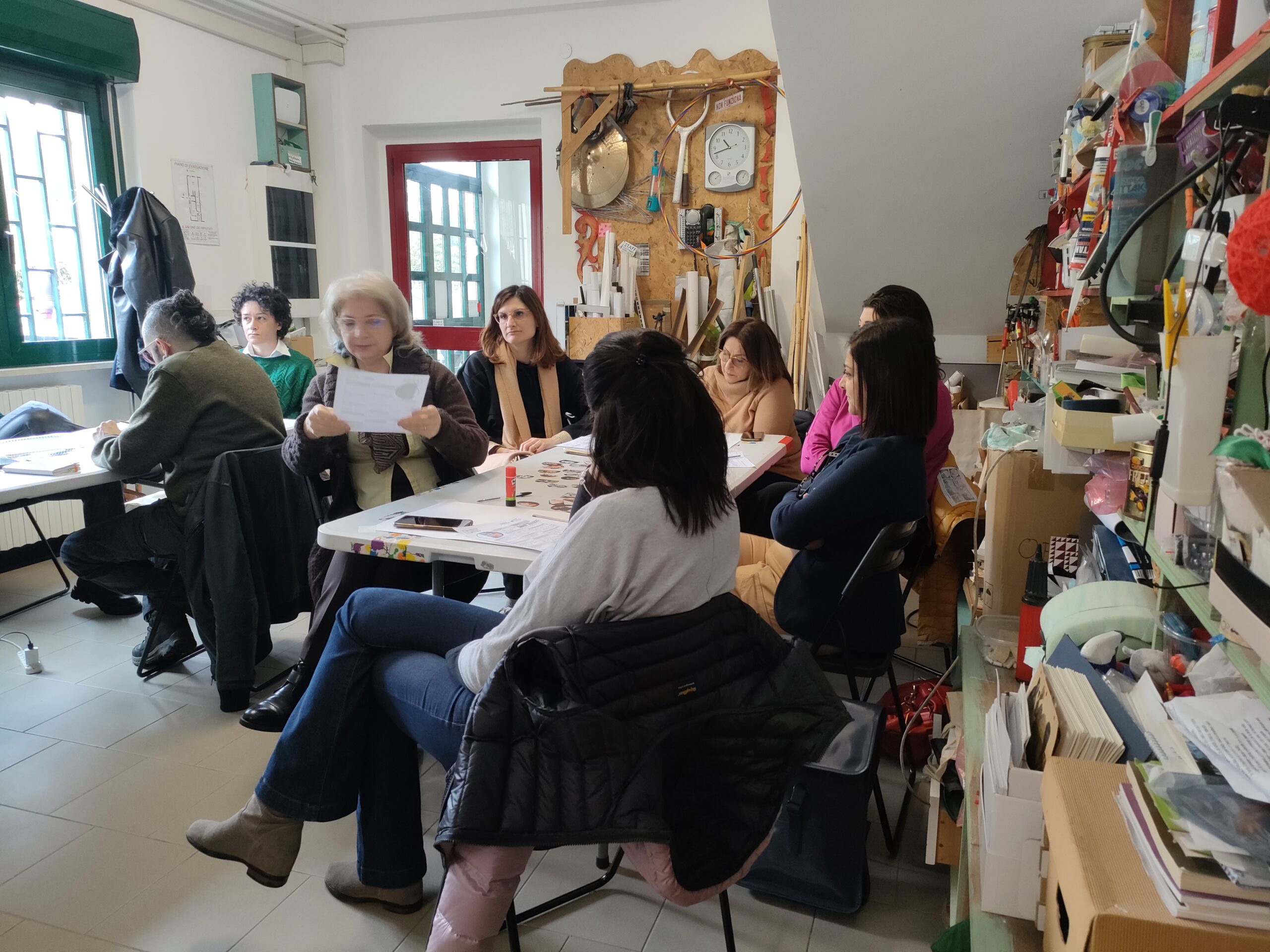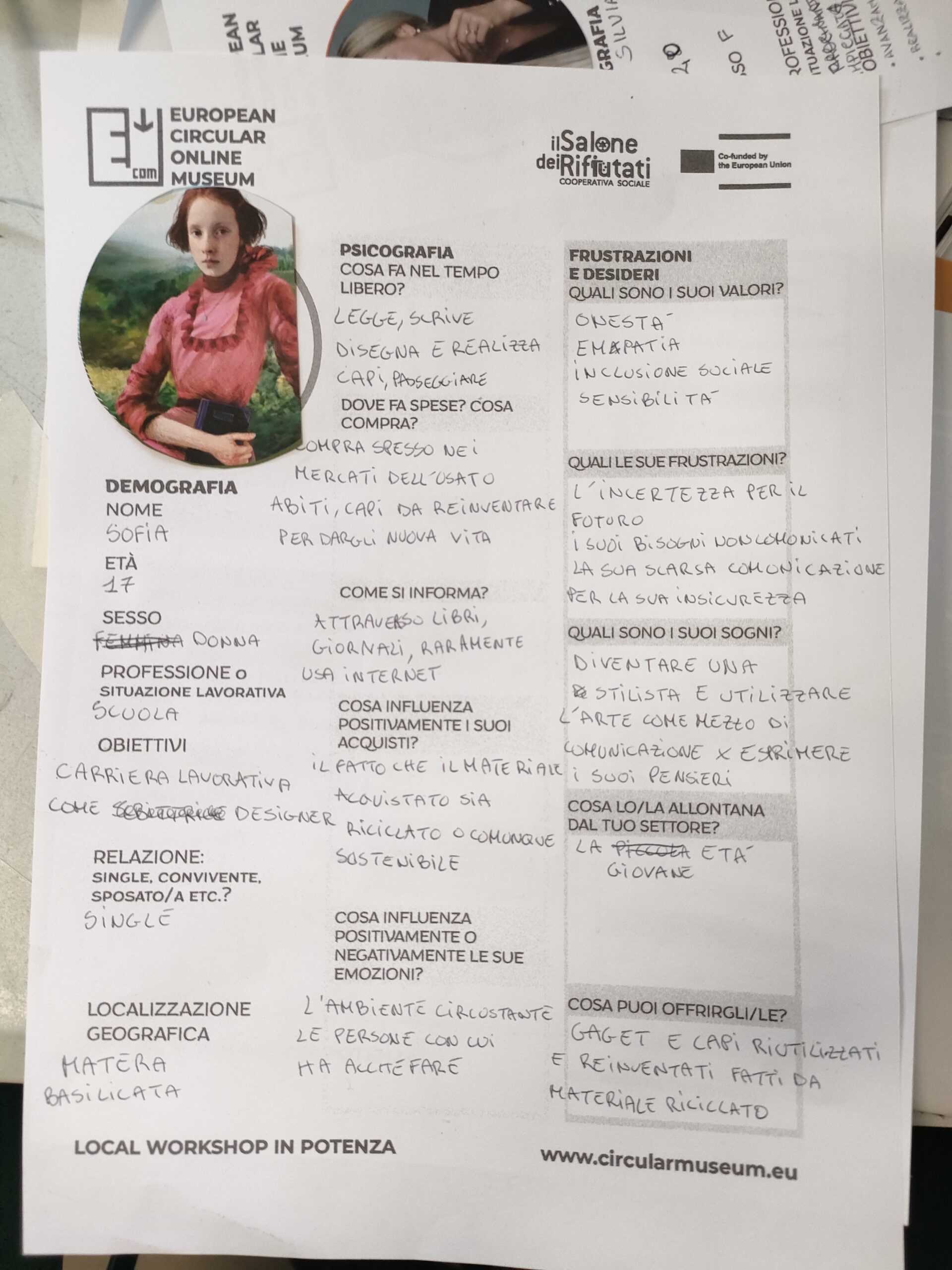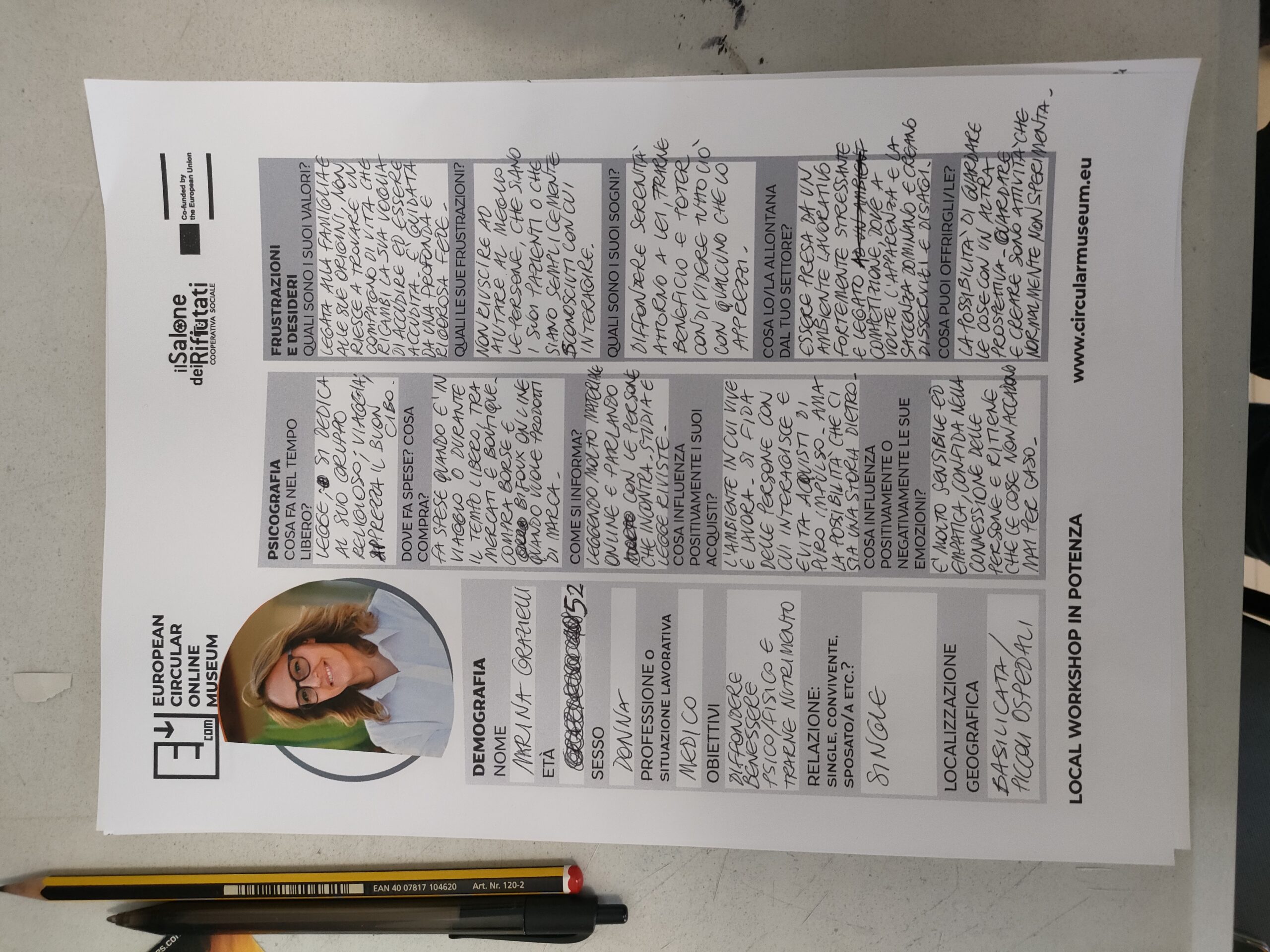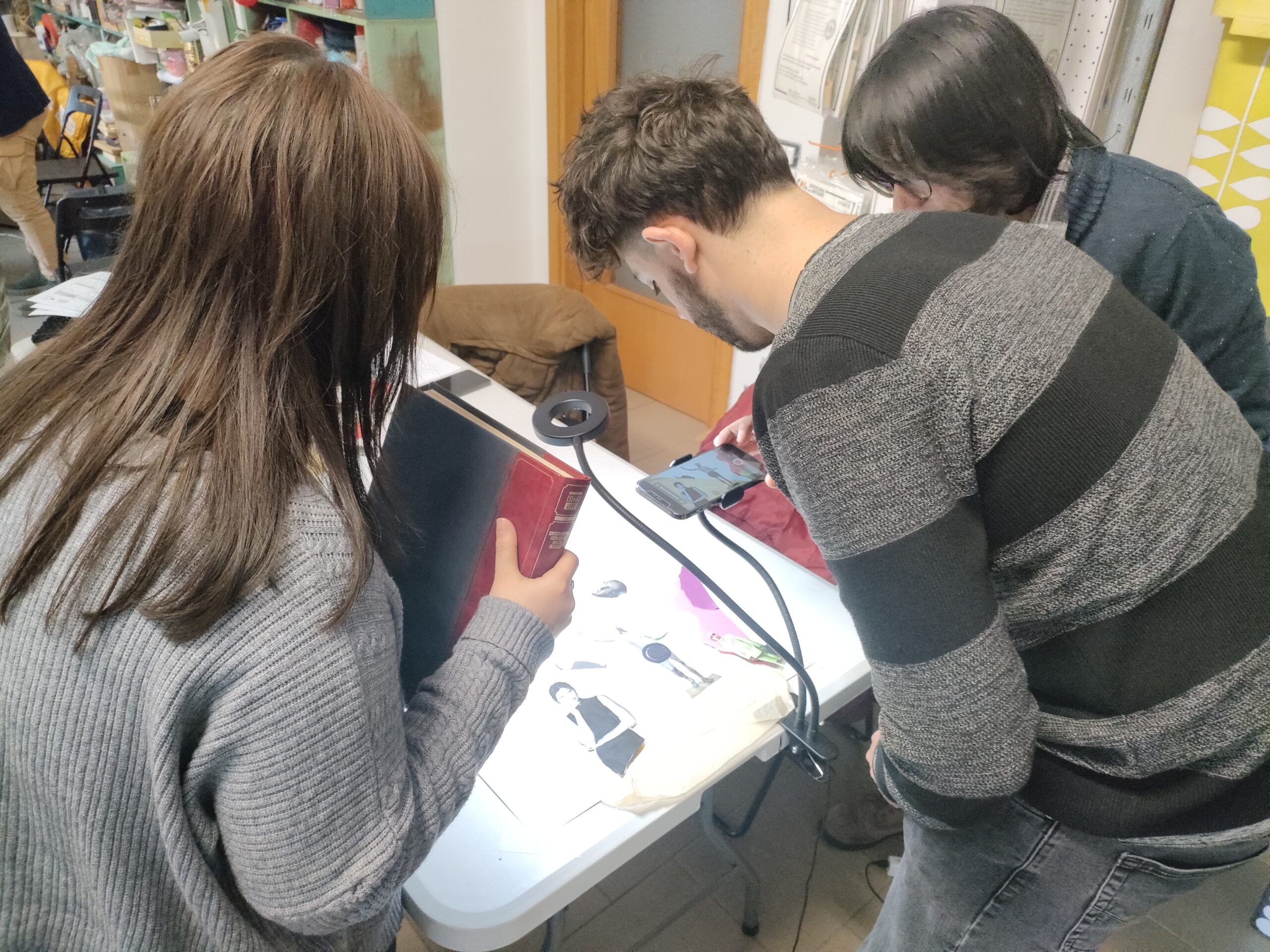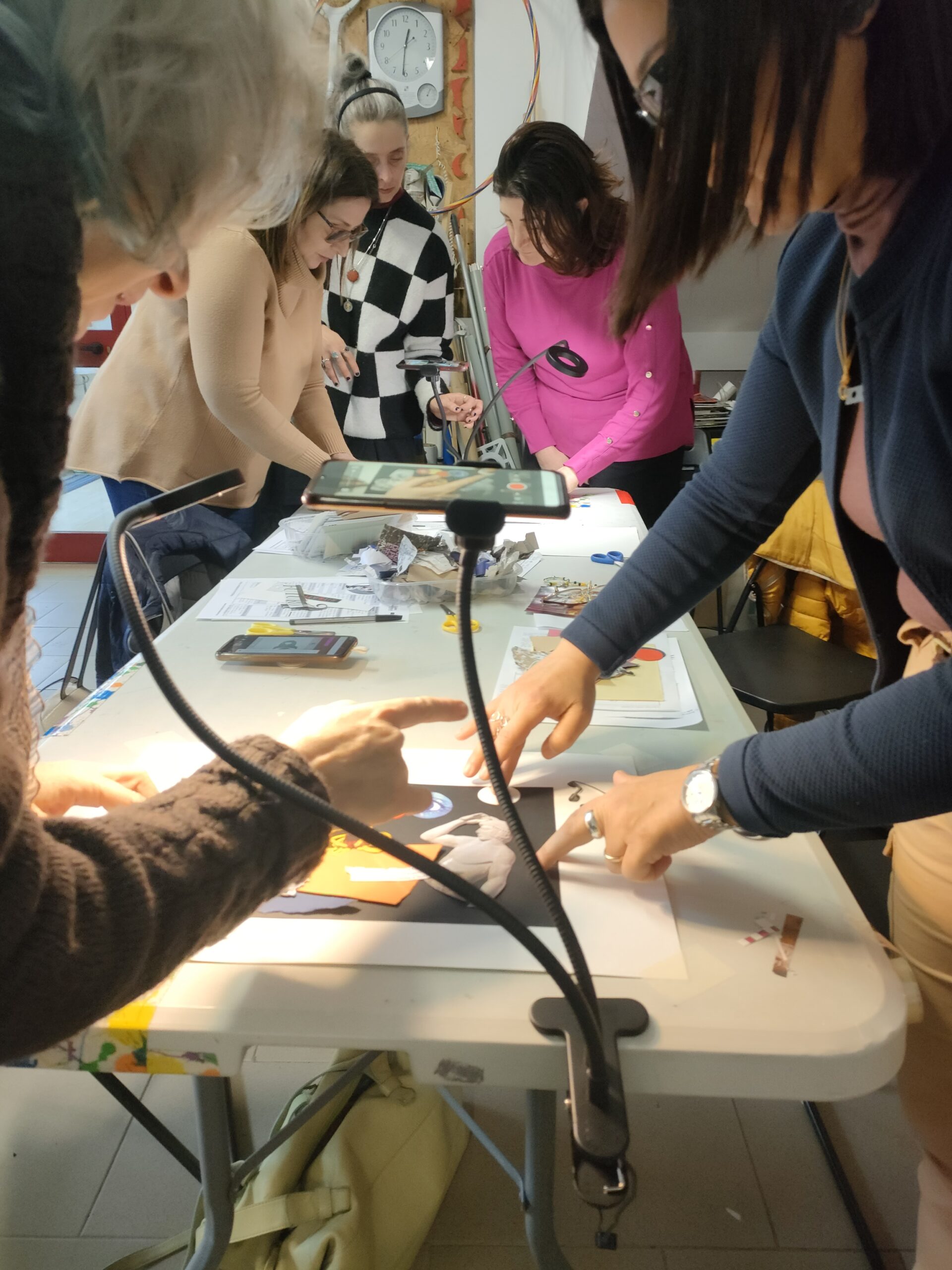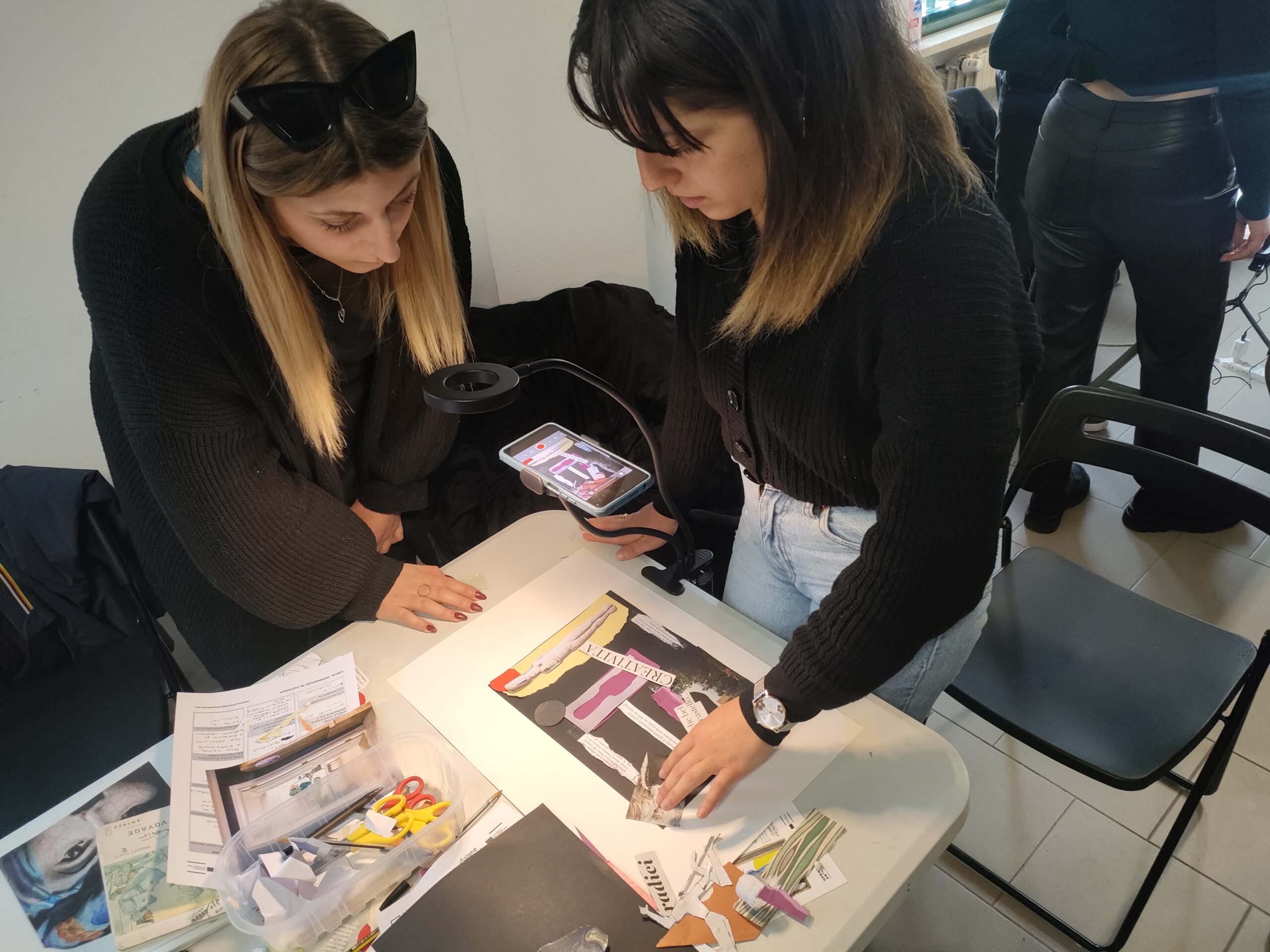The workshop took place in one of the co-working rooms of Les Amarres, a “tiers-lieu”, hosting associations’ events and offering shelter and administrative help among a wide range of activities for refugees during the weekdays. It lasted from 15:00 to 19:00.
The workshop had 6 external and 4 internal participants from COTA who have also actively participated in the activities, in addition to facilitating, documenting, and offering help for external participants. COTA reached out to external participants through paid publication on Instagram, which also contributed to improving the visibility of the EU COM project and of COTA ONG within the community of engaged and upcycling artists. Even those who did not have the possibility to participate in the event could join the EU COM artists on the platform and subscribe to the newsletter dedicated to the project.
The first module tested was “The Artist’s Diagram”, which also helped the participants to get to know each other by telling the story of how creation fits into our lives. The primary aim of the module is to allow participants to think about how to organize their multiple activities. To create the diagrams, participants had at their disposal different tools such as papers, paint, markers, rules, and even stencils. They could choose among three types of diagrams that were presented at the beginning of the activity to map a usual day during which they consecrate some time at least to create. The participants mapped their activities and energy line during a typical day in different manners, using drawings, colors, and patterns. They had 30 minutes to create, then they presented their diagrams in a plenary session and described their daily activities and feelings, energy, or lack of energy that accompanies their daily tasks. At the end, participants discussed their learnings on time management, difficulties, and those of the other participants.
The participants generally appreciated the activity. They learned much about each other, discovered many similarities that also helped them build a solid basis for the next co-creative activities, and engaged in a non-formal and enthusiastic conversation about what place creativity takes in their daily life.
The second module tested was “If I were an archaeologist”.
Participants had a wide choice of everyday objects that they had to describe scientifically as if they were archaeological findings from the 21st century. The aim of the exercise was to initiate the participants into thinking as upcycling designers.
As a third module, the “mapping opportunities” card game was tested. This activity allowed participants to map the different opportunities available to artists and craftspeople by identifying institutions that might be interested in their work, the types of activities they could offer them, the themes they could tackle, and the skills they could pass on or gain.
Feedback
According to the evaluation forms and the closing discussion, the overall feedback of the participants was positive. According to the overall evaluation made by both the trainers and the participants, more time should be left for the third exercise to discuss each card in more detail.
Ideally, the workshop could take place in two 3-hour sessions. Especially, as this last exercise seems to be the most difficult for creative minds that consist of adapting their manifold activities to concrete situations, specific demands, and public. During the first one, the two first exercises could be done and during the second, the third exercise could be divided into two activities comprising a more detailed explanation about the card game with examples. This solution would leave appropriate time more time to each pair to create their paths and finally to set up a work plan, possibly with photos and presentations.
Documents
coming soon….
image gallery
coming soon….
Video Gallery
coming soon….
























